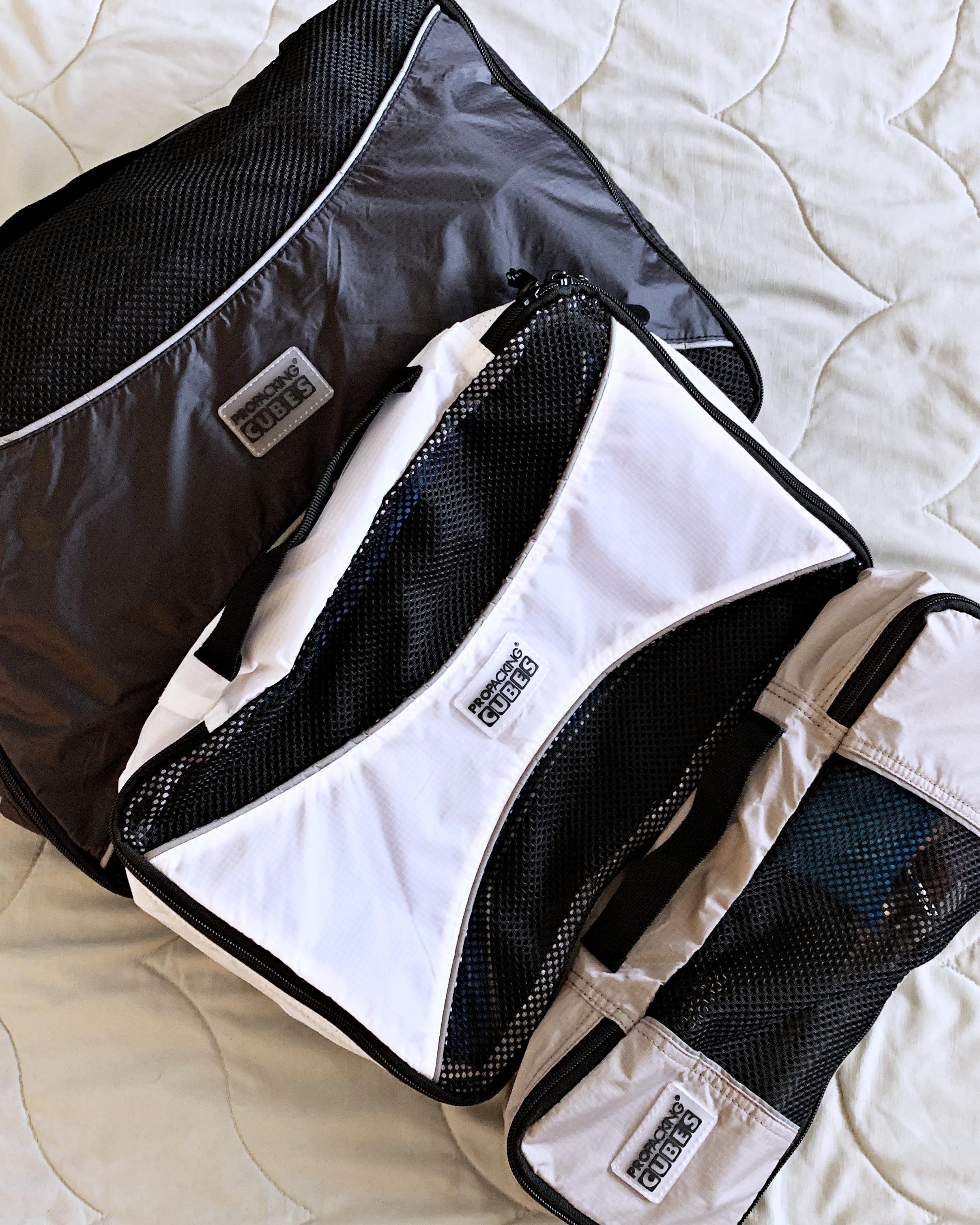
Before we started planning the details of our trip we had to make a very important decision - suitcase or backpack? In this post we will talk about the pros and cons for both, what we packed in our bags, and do's and don'ts.
The Suitcase
The Backpack
Packing Lists
Extra Essentials
Do's and Don'ts
The Suitcase
If you plan to stay mostly in one area of Japan (let's say Tokyo, for instance). A suitcase might be a good option for you, especially if you prefer to be prepared and pack the whole kitchen sink - or maybe you just plan to bring home lots of souvenirs. The downside to having a big suitcase to lug around is that, well, spaces in Japan tend to be very cramped.
Imagine trying to get on a crowded subway with a luggage case big enough to fit a human captive.
And forget trying to get onto a bus with that load! Some buses don't even allow you to get on if you've got a big suitcase in tow. There are also a lot of stairs in Japan - like, a LOT. You could wait in line for the elevators or go on the escalator, but that also has its hazards - a lady lost hold of her luggage and it ended up crashing into Mary at the airport.
If you do elect to use a rolling case, we’d advise you to use the same thing that most Japanese locals use – spinners. Those are the suitcases where all 4 wheels can turn. This allows you to maneuver it without needing to tilt the case, letting you move it around more easily in crowded areas.
The Backpack

And then you have the backpack. The brand that we went with is Osprey and they come in all different sizes and are measured by the maximum volume capacity.
The nice thing about a backpack is that you can get around much quicker since you are much more nimble and can weave in and out of crowds real easily. They are also easy to store in overhead compartments and small enough to keep on your lap for all those train rides you are probably going to be taking. Another major advantage of the Osprey pictured is that it is within airline regulations to act as a carry-on. As such, you don’t need to worry about the risk of airlines losing your luggage and don’t need to wait to pick it up.

These do get pretty heavy so you really need to take into consideration just how much you can realistically carry and for how long. Another thing to consider is souvenirs. We knew going into this trip that we would be buying souvenirs and the plan was to buy a suitcase before we left so we could just check the bag in. Well, we probably should've bought one earlier into the trip, because at one point we were carrying 5 other tote bags in addition to our backpacks.
Packing Lists
Extra Essentials

These cubes are super lightweight, durable, AND help keep your pack organized. They also have the benefit of squeezing a lot more clothes into your pack by compressing them. It also kept our extra shoes from getting our clothes and other gear all mucky. They also double as a dirty laundry bag in between washes! The set that we bought included 2 large bags, 4 medium bags, and 4 small bags.
Do's and Don'ts
Do pack lightweight clothing that you can layer or has multiple uses. (i.e. a pair of yoga pants that can double as slacks at a nice restaurant)
Do check your airline to see if certain devices are allowed onboard. For instance, we had bought an external battery specifically for our trip to Japan only to find out that they are banned on JAL flights.
Do pack a small lightweight backpack or bag to carry necessities. The Pacsafe Venturesafe X12 Anti-theft Backpack was a great investment and we felt secure knowing that the backpack was basically tamper-proof.
Do carry extra change to store your backpacks in lockers if you plan to do a lot of walking in one area.
Do bring an outlet adapter if you have any devices that require a 3 prong power cord.
Don't overpack - sure you might need all three of those sweaters, because hey, it can get pretty cold in Japan. But consider investing in lightweight thermal layers like the ones by Uniqlo or the variety found on Amazon. They are thin and compact, but they will keep you warm in the cooler months.
Don't forget a small hand towel to dry your hands in public restrooms.
If this post was helpful, please consider sharing it with a friend and subscribing to our newsletter for more helpful tips and tricks!



